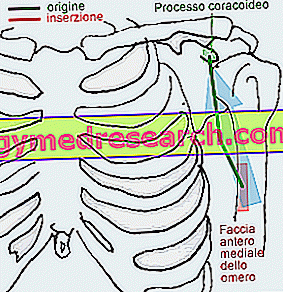
What is Atriance?
Atriance is a solution for infusion containing the active substance nelarabine.
What is Atriance used for?
Atriance is indicated for the treatment of patients with acute T-cell lymphoblastic leukemia (TALL) and T-cell lymphoblastic lymphoma (T-LBL). These are tumors in which T lymphoblasts (a type of immature white blood cells) multiply too quickly. In patients with acute lymphoblastic leukemia (T-ALL) the abnormal cells are concentrated mainly in the blood and bone marrow, while in subjects with lymphoblastic lymphoma (T-LBL) they are found mostly in the lymphatic system (lymph nodes or thymus). Atriance is used in patients who have not responded or who have stopped responding to at least two types of chemotherapy.
Since the number of patients with these diseases is low, they are considered rare and Atriance was designated an "orphan medicine" (a medicine used in rare diseases) on 16 June 2005. The medicine can only be obtained with a prescription.
How is Atriance used?
Atriance is given as an intravenous infusion (drip into a vein) under the
control by a doctor experienced in the use of this type of medicine. The dose and frequency of the infusion depend on the patient's age and body surface area. In adult and adolescent patients aged 16 or over, the recommended starting dose is 1 500 mg per square meter of body surface area, administered for two hours, on days 1, 3 and 5; the infusion should be repeated every 21 days. Younger patients receive a lower dose (650 mg per square meter), administered every day for an hour for five consecutive days, and repeated every 21 days. This program can also be followed for patients aged between 16 and 21 years.
If the patient experiences serious side effects on the brain or nervous system, therapy must be stopped.
Patients being treated with Atriance should be periodically monitored to detect any changes in blood counts and it is important that individuals at risk of tumor lysis syndrome (a complication due to tumor cell breakdown) receive adequate hydration. During treatment with Atriance, patients with kidney problems should be closely monitored to promptly detect the appearance of side effects. Atriance should be used with caution in patients with liver disorders.
How does Atriance work?
The active substance in Atriance, nelarabine, is a cytotoxic substance capable of killing cells in
active division, such as cancer cells. This substance belongs to a group of anticancer drugs called "antimetabolites".
In cells, nelarabine is converted into a guanine analogue, one of the fundamental chemicals that make up DNA. Once introduced into the body, this active analogue replaces guanine and interferes with the enzymes responsible for creating new DNA, DNA polymerases. In this way it stops the production of DNA and therefore slows the growth and multiplication of cancer cells. Since the active analogue of guanine accumulates in T cells and remains there longer, Atriance slows the growth and multiplication of the cells responsible for acute T-cell lymphoblastic leukemia (T-ALL) and T-cell lymphoblastic lymphoma (T -LBL).
How has Atriance been studied?
The effects of Atriance were first tested in experimental models before being studied in humans.
Atriance has been studied in two main studies involving patients with T-cell acute lymphoblastic leukemia (T-ALL) and T-cell lymphoblastic lymphoma (T-LBL) who had stopped responding to at least one previous anticancer therapy. The first study involved a total of 70 children and young adults under the age of 21, while the second involved a total of 40 adults and adolescents over the age of 16. About half of the patients had previously undergone, with negative results, at least two treatments. Patients in both studies were treated with Atriance, but the effects of the medicine were not compared to another drug. The main measure of effectiveness was the percentage of patients who responded to treatment, based on the disappearance of the signs of the disease and the improvement in blood counts within one month of starting treatment with Atriance.
What benefit has Atriance shown during the studies?
Atriance has been shown to be effective in a percentage of patients in both studies. In the first study, conducted on 39 children and young adults previously subjected, with negative results, to at least two treatments, five patients (13%) fully responded to therapy after one month, without evidence of disease and with normal blood counts. In the second study, among the 28 adults and adolescents refractory to at least two previous treatments, five (18%) showed a full response. In both studies, a partial response to Atriance therapy was observed in a greater number of patients, with a return of blood counts to normal levels.
What is the risk associated with Atriance?
In adult patients, the most common side effects reported with Atriance (seen in more than 1 patient in 10) are signs of infection, febrile neutropenia (decrease in the number of white blood cells associated with fever), neutropenia (decrease in the number of white blood cells), thrombocytopenia (decrease in the number of platelets), anemia (decrease in the number of red blood cells), drowsiness, peripheral neuropathy (injury to the nerves of the extremities), hypoesthesia (decreased sensitivity), paresthesia (sensitivity disorder), dizziness, pain head, dyspnoea (difficulty breathing), cough, diarrhea, vomiting, constipation, nausea, myalgia (muscle pain), edema (swelling), pyrexia (fever), pain, fatigue and asthenia (weakness). The majority of these side effects have been observed very frequently even in children. For the full list of all side effects reported with Atriance, see the Package Leaflet.
In patients treated with Atriance, serious side effects have been reported in the brain and nervous system, including drowsiness, convulsions and peripheral neuropathies causing numbness, abnormal sensations, a feeling of weakness and even paralysis. Patients should be carefully monitored for these side effects to be readily identified and treatment should be discontinued if necessary.
Atriance should not be used in people who may be hypersensitive (allergic) to
nelarabine or other ingredients of the medicine.
Why has Atriance been approved?
The Committee for Medicinal Products for Human Use (CHMP) noted that since the number of patients suffering from these diseases is low, the information supporting the approval of Atriance is limited, but agrees that the medicine could allow some patients to successfully continue treatment pending bone marrow transplantation, thus increasing their chances of survival.
Therefore, the committee decided that Atriance's benefits are greater than its risks in the treatment of patients with T-cell acute lymphoblastic leukemia (T-ALL) and T-cell lymphoblastic lymphoma (T-LBL) who have not responded or have had recurrences after treatment with at least two chemotherapy regimens, and has therefore recommended that the product be given marketing authorization.
Atriance has been authorized in "exceptional circumstances". This means that since the diseases are rare, it has not been possible to obtain complete information on the medicine. The European Agency for i
Medicines (EMEA) reviews new information available every year and updates this summary if necessary.
What information is still awaited for Atriance?
The company that makes Atriance will provide information obtained from safety studies of Atriance conducted on children and young adults, including a study of the medicine taken in combination with other anticancer drugs.
Other information about Atriance:
On 22 August 2007, the European Commission issued a marketing authorization for Atriance to the Glaxo Group Limited, valid throughout the European Union.
The summary of the opinion of the Committee for Orphan Medicinal Products on Atriance is available here.
For the full EPAR for Atriance, click here.
Last update of this summary: 07-2007.



